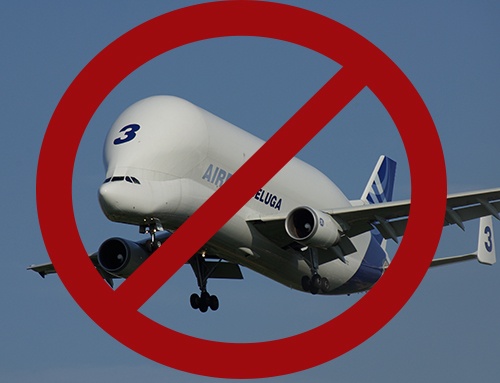Environment Always Changes

Change is an inevitable and constant reality in the aviation industry. A lack of change is tantamount to a lack of growth in an economy.
Likewise, if your aviation safety management system (SMS) is not changing, it’s not improving. "Continuous improvement of the SMS" is the third element of the "Safety Assurance" pillar of ICAO-compliant SMS.
How do you monitor environmental change in your company?
How do you implement change in your company?
Related Articles on Management of Change in Aviation SMS
- Understanding Management of Change in Aviation SMS
- How to Change Toxic Safety Cultures in Aviation SMS
- Best Practices for Change Management in Aviation SMS
Humans become comfortable in our daily routines. We don't like it when our comfort zone shifts and we are no longer able to predict outcomes.
But let’s face it, managing change can be tough because most of us dislike change.
- It’s uncomfortable.
- It’s frustrating.
- It's unpredictable.
- It doesn’t always make sense.
Moreover, it’s too easy to make the changes the wrong way – not the wrong changes, just changes that only act as a catalyst for resistance – and people seem to be ready to grumble over changes.
What’s worse, as the one driving the changes, you, as the safety manager, are in the hot seat.
Overcoming resistance to changes in the aviation industry doesn’t have to be fraught with peril.
Here are 7 ways for aviation safety managers to ease the pain:
#1 Make a Story of the Change
People like stories. We've been exposed to stories since we were children. Stories are more relatable and understandable than cold hard facts.
Our current situation is no different.
When implementing a change in safety procedures, etc., relate the changes using elements of story-telling that show:
- The necessity of the change
- The (stress “small but important”) impact it will have
- You will be following up after changes are made to see how the change is going
But package this information into demonstrative, real-life examples – real or fictional – that connect together into a narrative.
Position yourself as a harbinger of improvements, making people’s lives easier and safer, rather than the “guy making/changing another rule.” Show employees the value as it relates to them. Too often, line employees see change as beneficial to "management" but see no direct relationship to their position.
#2 Changes Should Be a Pilatus, NOT an Airbus

Small changes in aviation SMS should be easy changes. For more than one reason:
- Easier to implement
- Easier to adjust to
- Easier to sell people on
- Easier to manage the effectiveness
You get the keyword. Easier.
Unless absolutely necessary, changes should be small.
Of course, large changes are necessary from time to time though. Any time you are able, break the big change up into a series of smaller changes that can be implemented over time.
#3 Involve as Many People as You Can
Employees are more accepting of change when they are actively involved in the change process. The same methods of getting workers to participate in an aviation SMS apply here.
- Ask questions
- Engage people
- Get their input and ideas
- Help them feel involved
You obviously can’t incorporate everyone’s ideas, and you may already have “finalized” the change you are making. But simply talking to the people relevant to the change helps allow them to be, or at the very least helps them feel like, they’re part of the process of change.
Have You Read
- Checklist to Quantify Resistance to Your Aviation SMS
- How to Reduce Resistance to Aviation SMS With Difficult Employees
- 4 Tools to Find Resistance to Your Boss' Aviation SMS
#4 Be Able to Tell Someone What the Change Is in One Sentence
This doesn’t mean don’t make a story of your change.
It means simply being able to say, “[Insert story of change]. Basically, what we are going to do is [insert one sentence of change].
This is an important step in clarifying for yourself and others the end goal of the change.
#5 Solves a Specific Problem

Earlier I said it’s easy to implement changes in the wrong way, but it’s also easy to implement wrong changes. Change for change's sake, or to “see if something works better” (i.e. a guinea pig), is usually a really bad idea.
Rather, any change should always:
- Address a single issue
- Solve a relevant problem
- Have a very clear end goal
Part of this step is tied very closely to keeping changes small.
Big changes tend to address general problems and relevant goals are quickly swallowed into the effort of simply implementing the change.
#6 Keep Tabs on How Workers React
Seeing how effective a change is with your workers requires a bit of detective work: namely, following up.
Forcing a change is probably not a good idea. A better idea would be – if workers don’t like particular aspects of the change:
- Find a workaround
- Make modifications where able
Furthermore, keeping tabs is an excellent way to further engagement and involvement, which are key areas to reduce resistance to change.
#7 Make Changes Regular, Set an Announcement Schedule
I don’t mean make changes regularly. I simply mean that not everyone likes surprises.
Set a standard day of the week/month/etc. – a day when, if there are changes, people can expect to hear about them. Setting a change “schedule” is a good idea for a couple of reasons.
For one, it adds an element of “routine-ness” to changes in general.
Furthermore, it allows you to inform workers of an upcoming change ahead of time. We like predictability when we are working in dangerous, high-risk environments. When change proposals pop up unexpectedly, we are not comfortable with the unknown that the proposal may bring. This phenomenon becomes more pronounced in high-stress workplaces.
Employees work hard to learn how to do their jobs as safely and efficiently as possible. Their schedules may be very tight, allowing no room for interruptions or learning new processes. Unexpected change breeds distrust and discontentment. Safety culture is adversely affected.
When employees have a set day or week when the "unexpected" is expected, safety culture is less likely to suffer.
Related Aviation Safety Culture Articles
- What Is Safety Culture in the Aviation Industry?
- How to Tell Your Safety Culture Needs Help? - With Aviation SMS Resources
- 5 Characteristics of Effective Aviation Safety Cultures - With Free Survey
Putting Everything Together
Many of the points above relate to one another. While I break apart this “set” of tips, the important elements for reducing resistance to change in an aviation SMS are:
- Helping people find/feel involvement through engagement
- Making small, relevant, goal-oriented changes that you can easily explain
- Make changes relatable with story-telling methods
- Add elements of “routine-ness” to the process of making changes
Change isn’t easy, but it certainly doesn’t have to be a big deal.
Useful Tools to Manage and Document Change
Many aviation service providers don't have good tools to manage and adequately document the "management of change" process. If you need a repeatable process to document change and perform hazard analysis on these changes, we can help.
Schedule a live demo today to learn how you can benefit from aviation-specific tools to manage change.
What Else Do Safety Managers Do?
If you are a safety manager, you have certain tasks that must be performed on a monthly, quarterly, or annual basis. Here are some checklists to help you plan your time or to ensure you are not missing anything.
Last updated in September 2025.








